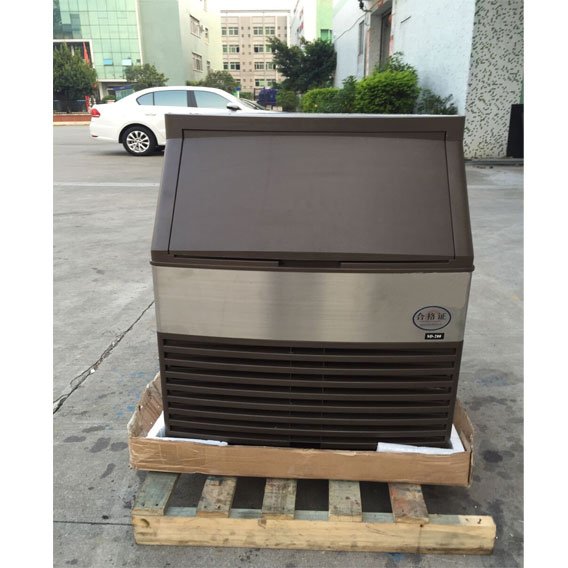Ice machines are used in restaurants, bars, and cafes. They are an easy way to provide customers with ice quickly, efficiently, and with an aesthetically pleasing result.
The ice produced by commercial ice machines is transparent, and the shape of the ice cubes is also very standard, but do you know how the machine works? Ice cube machine factory made some explanations for those who want to understand the science and technology behind our great products.
Cold, metal, water
There is more than one method of configuring ice machines, but they all have three basic components: cooling system, water supply system, and some methods of forming cubes, usually metal trays.
standard system
In the most commonly used ice machine system, the metal ice tray is connected to a set of coiled heat exchange tubes, which are similar to the heat exchange tubes on the refrigerator. The secret of ice making lies in a compressor, which drives the refrigerant fluid flow through a cycle of condensation and expansion.
The refrigerant is compressed through a narrow tube. It was then released into a wider tube and expanded.

Ice making
When the refrigerant is compressed, it will generate heat. Then, it is pumped into the condenser, where it loses a lot of heat and condenses into a liquid. When this liquid reaches the expansion valve, it quickly evaporates into a gas and is further cooled. This causes the temperature in pipes and metal trays to drop rapidly.
Next, the water in the pump slowly pours onto the cold metal tray, where it gradually freezes to form ice cubes. Because the water freezes layer by layer, the resulting cube is very clear, not cloudy.
Release ice
Once the ice cubes are ready, change the refrigerant path by triggering the solenoid valve. Now, the hot air from the compressor does not flow through the condenser pipe and cools, but is forced through a wider bypass pipe, where it does not lose temperature or condense.
When this hot gas reaches the evaporator pipe, they will quickly heat up, and the ice tray will melt slightly and release from the ice tray.
Collect ice
Once the ice is formed, it still needs to go from the tray to the collection box below. The solution to this problem is the very simple-the design of the ice tray is slightly tilted. When the ice forms, it will stick to the cold metal surface, but once released by the heat, gravity will take over and it will easily slide out of the tray.
However, we all know that ice cubes sometimes stick together, so many systems have a cylinder piston that can push the tray slightly to ensure that all cubes can move freely.
Our company provides a fully automated ice maker.
Copyright:@2020-2021
Comments Please sign in or sign up to post.
0
0 of 500 characters used